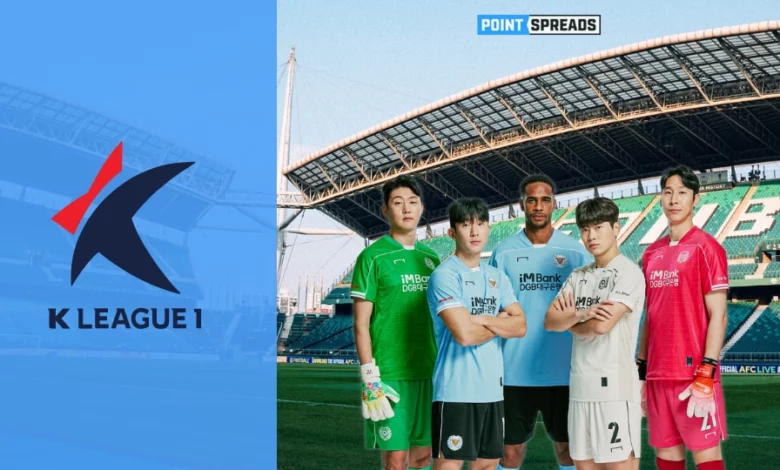K-League 1: South Korea’s Premier Football Championship
Dishing Out Southern-Asian Flair

Historical Foundations of K-League 1
The K-League 1, established in 1983 as the Korean Super League, is the top tier of men’s professional Korean league soccer in South Korea.
The league started with five founding clubs: Hallelujah FC, Yukong Elephants, Pohang Steelworks, Daewoo Royals, and Kookmin Bank. Hallelujah FC claimed the inaugural championship, edging out Daewoo Royals by a single point.
Over the years, the league has undergone several rebrandings and structural changes, becoming the Korean Professional Football League in 1987, and later changing to K-League in 1998. Post-2011, it was split into two divisions, leading to its current format where the top division was named K-League 1 in 2018.
K-League Format
K-League 1 consists of twelve clubs battling it out in a mixed format that includes regular matches, a split system, and playoffs, great for K-League betting.
Initially resistant to relegation, the league introduced a relegation system in 2012, adding a competitive edge and greater stakes for the participating teams. The league mimics the Scottish Premier League’s split system, dividing teams into two groups after initial rounds to decide the final standings through additional intra-group matches.
This soccer K-League format intensifies the competition for the championship and the battle to avoid relegation, with the bottom teams facing demotion to K-League 2.
Past Winning K-League Teams
The previous champions of K-League 1 are franchises that have contributed significantly to South Korean soccer. Jeonbuk Hyundai Motors stands out with several titles, dominant in the league. FC Seoul and Pohang Steelers also feature in the list of champions. The most recent seasons have seen Ulsan Hyundai clinching back-to-back titles in 2022 and 2023.
| Club | Champions | Runners-up |
|---|---|---|
| Jeonbuk Hyundai Motors | 9 | 3 |
| Seongnam FC | 7 | 3 |
| FC Seoul | 6 | 5 |
| Pohang Steelers | 5 | 5 |
| Ulsan HD | 4 | 10 |
| Suwon Samsung Bluewings | 4 | 4 |
| Busan IPark | 4 | 3 |
| Jeju United | 1 | 5 |
| Hallelujah FC | 1 | 0 |
| Jeonnam Dragons | 0 | 1 |
| Incheon United | 0 | 1 |
| Gyeongnam FC | 0 | 1 |
Current Season’s Team Line-Up
The current season includes a diverse mix of teams, from powerhouses to newbies, as can be seen in the bullet-point, K-League table below:
- FC Seoul and Pohang Steelers: represent some of the most traditional and successful clubs.
- Jeonbuk Hyundai Motors: continues with recent successes.
- Ulsan Hyundai: the defending champions, are looking to build on their recent achievements.
- Gimcheon Sangmu: representing the military, adds a unique dynamic to the league since they are ineligible for AFC Champions League qualification.
- Newer teams like Daejeon Hana Citizen and Gwangju FC are eager to challenge the established hierarchy.
K-League Top Scorers and Standings
The K-League 1 list of top scorers features players from various nationalities and clubs, along with their K-League player stats.
Leading the chart in K-League standings is Dejan Damjanović, a Montenegrin striker who played for four different clubs in the league. Over his K-League 1 career, Damjanović made 312 appearances, scoring an impressive 150 goals and providing 159 assists. He is followed closely by South Korea’s own Dong-gook Lee, who also played for four clubs, tallying 152 goals in 345 matches. Lee’s contribution to the league also includes 153 assists, showing his dual threat as a scorer and provider.
Shin-wook Kim, another prominent South Korean forward, scored 186 goals in 290 appearances, making him one of the most formidable strikers in the league’s history. His tall frame and physical presence allowed him to dominate the forward position.
Brazilian players have also made significant impacts in K-League matches, with Santos, a second striker, scoring 177 goals in just 191 matches for two different clubs. His striking rate highlights the lethal finishing ability Brazilian players have brought to K-League 1. Another Brazilian, Júnior Negrão, netted 69 goals in only 91 appearances.
Other notable scorers are Min-kyu Joo from South Korea, with 150 goals in 161 appearances, and North Macedonian Stevica Ristic, who has 72 goals in 190 appearances across four clubs.
The diversity continues with players like Mauricio Molina from Colombia, who scored 57 goals as an attacking midfielder, and Russia’s Stanislav Ilyuchenko, who added 49 goals in his tenure in the league. Brazilian players continue to feature prominently, with Eninho and Edú scoring 56 and 47 goals, respectively, demonstrating the technical skill Brazilian forwards bring to the league.
Qualification to the AFC Champions League
Top teams in K-League qualify for the prestigious AFC Champions League, providing them an opportunity to compete on a larger Asian stage. Exceptions like Gimcheon Sangmu underscore unique aspects of the league’s structure, where due to their military status, they remain ineligible for continental competition despite their performances and K-League odds.
K-League’s Economic Impact on the Community
Beyond the pitch, K-League clubs are deeply integrated with their local communities, with several clubs owned by major South Korean conglomerates, known locally as “chaebols”. This ownership model has helped stabilize the clubs financially and has fostered a deep connection with local fanbases.
It’s getting hot in here, with all the goods we provide for you active bettors at the PointSpreads soccer betting news front. From soccer predictions to scores and odds, we help you out with your picks and parlays and other betting market options when you bet online!

